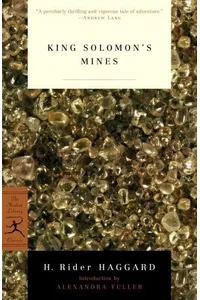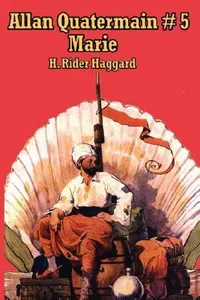Step into the thrilling world of Allan Quatermain, where heart-pounding adventure and hidden treasures await! Created by H. Rider Haggard, the Allan Quatermain series follows a rugged British hunter and explorer navigating the wilds of colonial Africa. Packed with daring escapades, sympathetic portrayals of native cultures, and a nuanced take on imperialism, these novels birthed the adventure genre as we know it, captivating readers since the 1880s.
Quatermain isn’t your typical hero—he’s a weathered marksman with a sharp wit and a deep respect for the lands and people he encounters. From lost cities to mythical mines, his journeys blend action with exploration, making every page a vivid escape. Ready to uncover the legacy of this iconic adventurer? Let’s dive in!
How Allan Quatermain Began
In 1885, H. Rider Haggard introduced Allan Quatermain in King Solomon’s Mines, inspired by tales of African exploration and his own experiences in colonial South Africa. Haggard, a British author, aimed to craft a gripping alternative to the romantic novels of his time, drawing on real explorers like Frederick Selous. The book’s instant success sparked a series that spanned 18 novels and short stories, cementing Quatermain as a literary legend.
Haggard’s vivid storytelling was groundbreaking, blending authentic African settings with fantastical elements. His work reflected both the era’s colonial attitudes and a rare empathy for indigenous peoples, setting the series apart from its contemporaries.
The Heart of Allan Quatermain
The series kicks off with King Solomon’s Mines (1885), where Quatermain leads a perilous quest for a legendary diamond mine, joined by Sir Henry Curtis and Captain Good. The trio battles treacherous terrain and hostile tribes, uncovering secrets in a lost African kingdom. In Allan Quatermain (1887), the sequel, our hero explores the hidden land of Zu-Vendi, facing civil war and forbidden romance.
Other gems include Maiwa’s Revenge (1888), a fast-paced tale of vengeance against a tyrannical chief, and She and Allan (1921), where Quatermain meets Haggard’s mystical heroine Ayesha from the She series. Themes of bravery, loyalty, and cultural respect shine through, set against lush African landscapes. Haggard’s style—vivid, immersive, and action-packed—makes every book a portal to a bygone era, though some colonial perspectives reflect the time’s biases.
The series’ unique blend of realism>Quatermain’s adventures balance high-stakes action with thoughtful commentary on colonialism, nature, and human greed. While rooted in 19th-century views, Haggard’s nuanced portrayals of African cultures and critiques of imperialism add depth, making the series a fascinating mix of entertainment and reflection.
Why Allan Quatermain Resonates
The Allan Quatermain series pioneered the adventure genre, inspiring icons like Indiana Jones and countless lost-world tales. Its vivid settings and gripping plots have fueled adaptations, from silent films to modern graphic novels, keeping Quatermain’s spirit alive. Fans cherish the series for its bold heroism and immersive world, while scholars value its historical insight, despite its dated elements.
Quatermain’s legacy endures because it captures the thrill of discovery and the complexity of human encounters. It’s a time capsule of adventure literature, inviting readers to wrestle with its contradictions while savoring its timeless excitement.
- First Book Published: 1885 (King Solomon’s Mines)
- Total Books: 18 novels and short stories
- Key Setting: Colonial Africa
- Notable Adaptation: 1985 film King Solomon’s Mines
Dust off King Solomon’s Mines and dive into Allan Quatermain’s thrilling world! Whether you’re a fan of adventure, history, or epic quests, this series promises an unforgettable journey.















